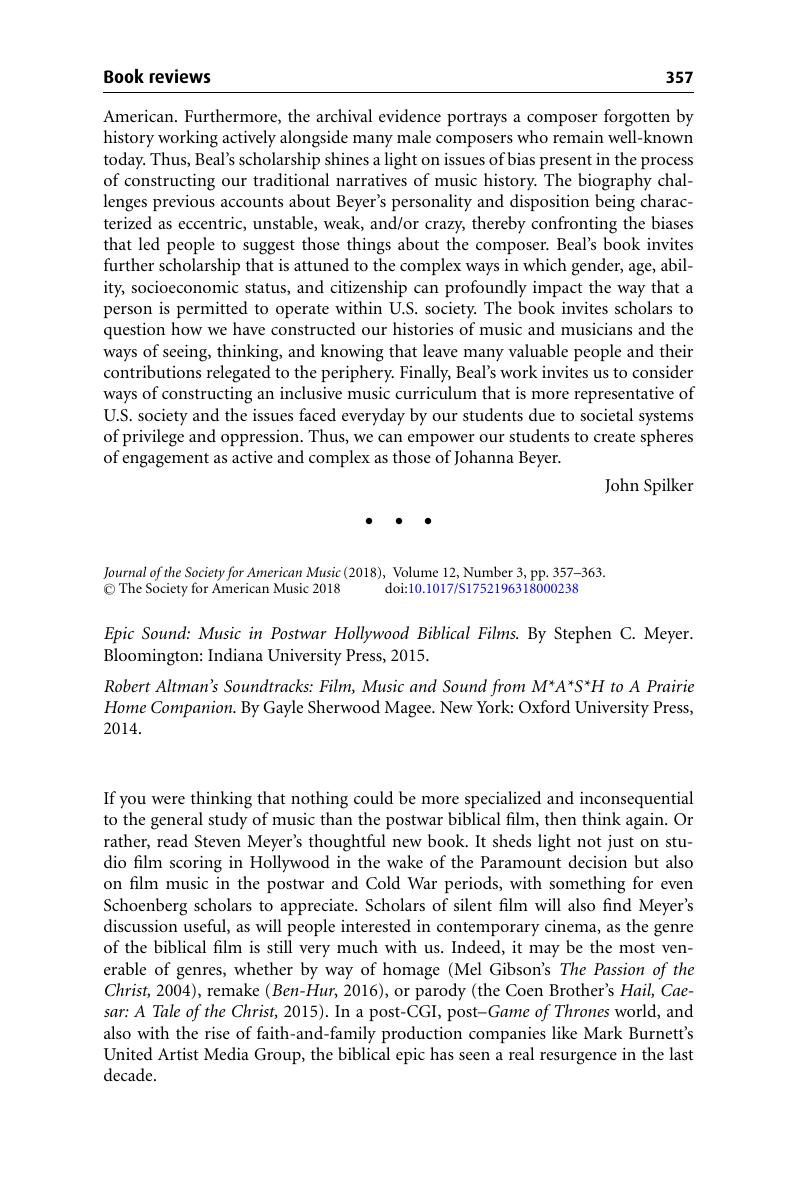No CrossRef data available.
Published online by Cambridge University Press: 10 July 2018

1 Barthes, Roland, “The Romans in Films,” in Mythologies, selected and trans. by Lavers, Annette (New York: Hill and Wang, 1972), 26–28Google Scholar; and Wood, Michael, America in the Movies, or Santa Maria, It Had Slipped my Mind (New York: Columbia University Press, 1975)Google Scholar.
2 McLoughlin, William G., Modern Revivalism: Charles Grandison Finney to Billy Graham (New York: Ronald Press Company, 1959)Google Scholar; and McLoughlin, , Revivals, Awakening and Reform: An Essay on Religion and Social Change in America, 1607–1977 (Chicago: University of Chicago Press, 1978)Google Scholar.
3 See for instance, Smith, Jeff, “Every Gun Makes its Own Tune: Ennio Morricone, The Good, the Bad and the Ugly and L'esthetique du Scopitone,” in The Sounds of Commerce: Marketing Popular Film Music (New York: Columbia University Press, 1998), 131–54Google Scholar; and Leinberger, Charles, Ennio Morricone's The Good, the Bad and the Ugly: A Film Score Guide (Lanham, MD: Scarecrow Press, 2004)Google Scholar.
4 Gorbman, Claudia, “Auteur Music,” in Beyond the Soundtrack: Representing Music in Cinema, eds. Goldmark, Daniel, Kramer, Lawrence, and Leppert, Richard (Berkeley: University of California Press, 2007), 148–62Google Scholar.
5 Altman, Rick, “24-Track Narrative? Robert Altman's Nashville,” Cinéma(s): Journal of Film Studies 1, no. 3 (Spring 1991), 102–25CrossRefGoogle Scholar; and Beck, Jay, Designing Sound: Audiovisual Aesthetics in 1970s American Cinema, (Rutgers, NJ: Rutgers University Press, 2016)Google Scholar.